Tools Working Conditions Designed For Ease Of Use
"No, sorry, I can't make it at that time." How many times have you heard that phrase, or something similar? It happens more often than you'd think. Case in point: my friends and I attempted to make plans to meet up for dinner. The leader of the group suggested a location, date, and time. The remaining four of us checked our individual calendars and reported back in our group chat. One person was busy that day -- so it was back to the drawing board, and new times were suggested. This resulted in a long, confusing thread of messages that spanned multiple hours as meeting times were suggested and rejected. Eventually, we settled on a date and time, but the process of finding the best time to meet was inefficient and frustrating. I'm sure you've had similar experiences, either outside of work or when scheduling meetings with managers, colleagues, or prospects. Finding times to meet can be particularly challenging, especially if the people you're booking time with have back-to-back meetings blocking off the majority of the day. Or, their schedules could be completely booked far in advance. This is where meeting tools can help simplify the process of finding the best times to meet. It can be a challenge to schedule meetings at times that work for everyone. Here are a few tips to keep in mind when scheduling meetings and sending meeting invitations: Objective: During this meeting, we'll discuss the content calendar assignments for Q1 and decide whether we will write about sales or marketing topics first. This statement at the beginning of the meeting invitation makes it clear why we're having the meeting and what needs to be decided on before the meeting ends. If you're having more than one other person in your meeting, you'll find it helpful to have an agenda prepared. We all know that tangents happen, and sometimes for good reason. However, it's respectful of everyone's day to stay on topic so the meeting ends on time. An agenda helps us do that. If discussions go awry, we can draw everyone's attention back to the items on the agenda. How many times have you heard that a meeting could've been an email? While this might seem like tongue-in-cheek advice, there's some merit to the idea. If you can, send an email update instead of bringing an entire group together for an hour. If you need to demonstrate ideas visually, consider recording a video and sending it along with your email summary. Tools like Loom make this easy and fast so you and your colleagues can get back to your day. Luckily, there are meeting scheduling tools to simplify the process of finding the perfect meeting time. The HubSpot Meetings Tool allows you to connect your Google Calendar or Office 365 calendar which automatically syncs your availability. Then you'll create a meeting link, send it to your meeting invitees, and they can choose a meeting time that works best for them. Plus, sales teams can add their group availability or use the round-robin feature to book meetings with prospects. The meetings tool integrates directly with the free CRM to manage contact details and see who has booked a meeting with you. Doodle is a polling tool designed specifically for finding meeting times. The host of the meeting suggests possible times for the meetings and sends the poll to the meeting participants. From there, they'll enter their availability, and the meeting host selects the best meeting date and time based on the responses. Find a time to meet by entering your meeting details, suggesting meeting dates and times based on your availability, and inviting meeting attendees. The invitees have the ability to choose from the suggested meeting dates and times and choose the one that works best for them. With SurveyMonkey, you can choose a meeting date and time, create a poll, and send the link to the poll to meeting participants via email. The poll can also be embedded on a website or Facebook page to reach even more people. If they don't respond to the poll within a certain timeframe, SurveyMonkey will send a reminder email. Calendly is a meeting scheduling tool that connects to your calendar. It even lets you set your availability and send a meeting link to contacts. Meeting invitees can book a meeting at a time that's convenient for them and that time is automatically scheduled on your calendar. Want to meet with one person or multiple people? You can find a time that works for everyone using Google Calendar. Start out by logging into your Google Calendar account. To create a new event, click "Create" and a pop-up will appear. Then click the "More options" button to add your meeting details. To edit an existing event, click on the event you want to update, and select the pencil icon to edit it. Add guests by searching for their email address in the "Add guests" search box. Click the "Find a Time" tab to determine times that work best for you and your meeting guests. You can switch between a "Day" and a "Week" grid view to see which dates and times your meeting participants are available to meet. Click the area within the calendar grid view to select a time. Press the "Save" button and the date and time will be updated. Scheduling meetings at the right time can be a struggle. But these tips and tools will make it easier to find a meeting time that works for everyone. Remember to stay mindful of everyone's time, offer an objective and agenda for the meeting, and when in doubt — don't schedule a meeting that could be an email. Your calendar and your constituents will thank you for it. Editor's note: This post was originally published in April 2020 and has been updated for comprehensiveness. 
Tips for Finding a Meeting Time That Works for Everyone
1. Provide meeting details.
Have you ever been to a meeting and the first couple of minutes were spent figuring out who organized the meeting, what the purpose of the meeting was, and whether there was an agenda to follow? A simple objective statement in the meeting invitation can clear up all of that confusion. Here's an example I use to give everyone some insight into what we'll be discussing and what the end goal of the meeting will be. 2. Prepare an agenda.
3. Communicate value.
In addition to having an objective of the meeting and an agenda, you'll need to answer the question: What will participants gain from the meeting? Perhaps the meeting's purpose is to reveal a new process, decide on a strategy, or even something fun like a meet and greet for new team members. No matter the case, everyone should know what's in it for them and how they'll be affected by the information presented at the meeting.
4. Determine the meeting type.
Will the meeting be a conference call, a video chat, or in-person? Having this information determined before the invites hit inboxes will save everyone a lot of time and help the meeting run smoothly. Be sure to include a link to the video or audio conference beforehand so everyone can join on time. If you're having an in-person meeting, be sure the conference room is booked and communicated to the group in advance.
5. Consider all time zones.
For a national or a global team, you'll need to keep in mind the different time zones that all meeting participants work in. You can easily see this using Google Calendar. Slack also lets you see the current time where another team member is.
6. Schedule the meeting in advance.
Avoid booking meetings with people just a day or two before the meeting needs to happen. In order to have the most productive time with the group, everyone needs a chance to adequately prepare. Whether the people being invited have to report out, or they're listening and asking questions, you'll want to share an agenda as soon as possible so everyone understands what is expected of them during your time together.
7. Block off "no meeting" time on your calendar.
If you're the one getting invited to a ton of meetings, you'll find it helpful to block time off of your calendar where meetings can't be scheduled. Perhaps this is the time when you're most productive or have personal activities planned. Whatever the reason, you'll have peace of mind knowing that your pre-planned activities and tasks won't be interrupted by a meeting.
8. Don't schedule a meeting when an email will do.
Top 5 Meeting Scheduling Tools
1. HubSpot Meetings Tool
Price: Free
2. Doodle
Price: $4.08/month for 1 user (Private), $5.75/month for 1 user (Small Business), $2.98/month/user for 5 users (Business)
3. NeedToMeet
Price: Free (Standard), $12/year/user (Advanced), $19/year/user (Premium)
4. SurveyMonkey
Price: $28/user/month (Team Advantage), $89/user/month (Team Premier), Contact for details (Enterprise)
5. Calendly
Price: Free (Basic), $8/user/month (Premium), $12/user/month (Pro)
Find a Meeting Time Google Calendar
1. Navigate to Google Calendar.
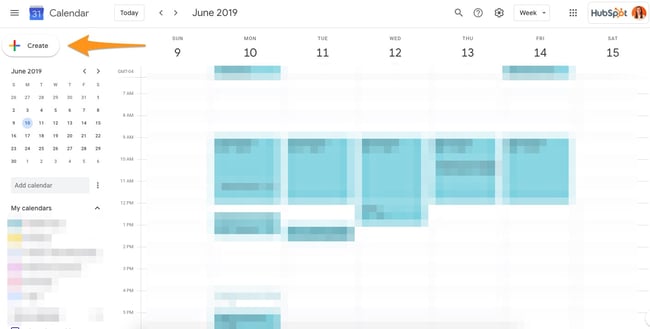
2. Create a new event or edit an existing event.

3. Add guests to the invite.
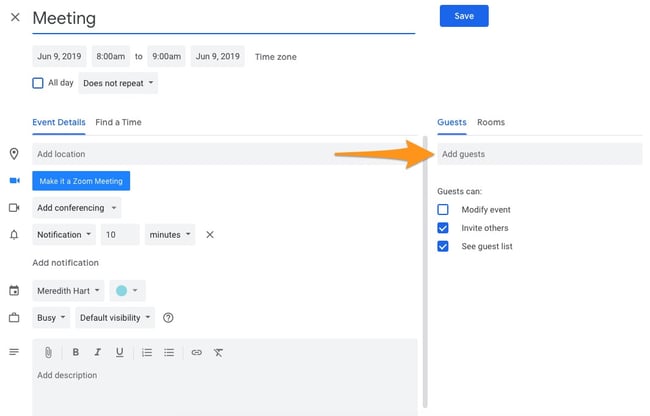
4. Click the "Find a Time" tab.
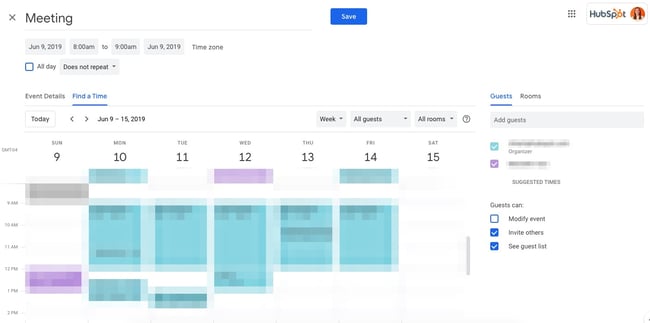
5. Select a time.

Schedule Meetings Hassle-Free
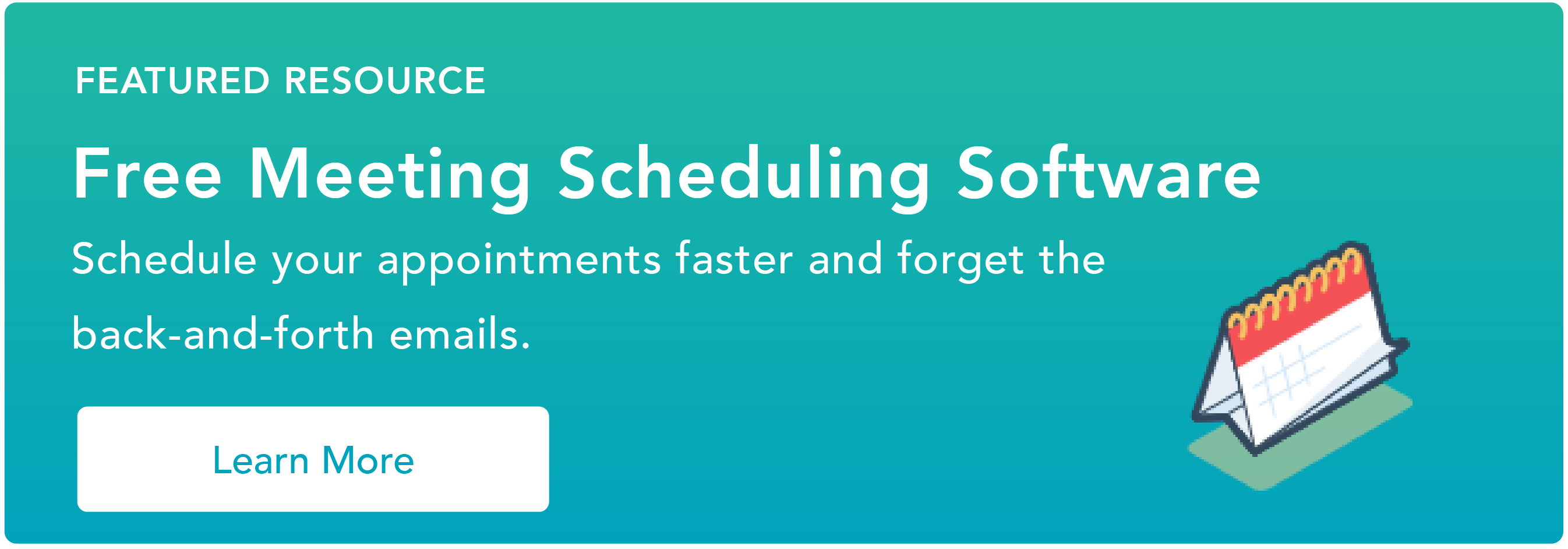
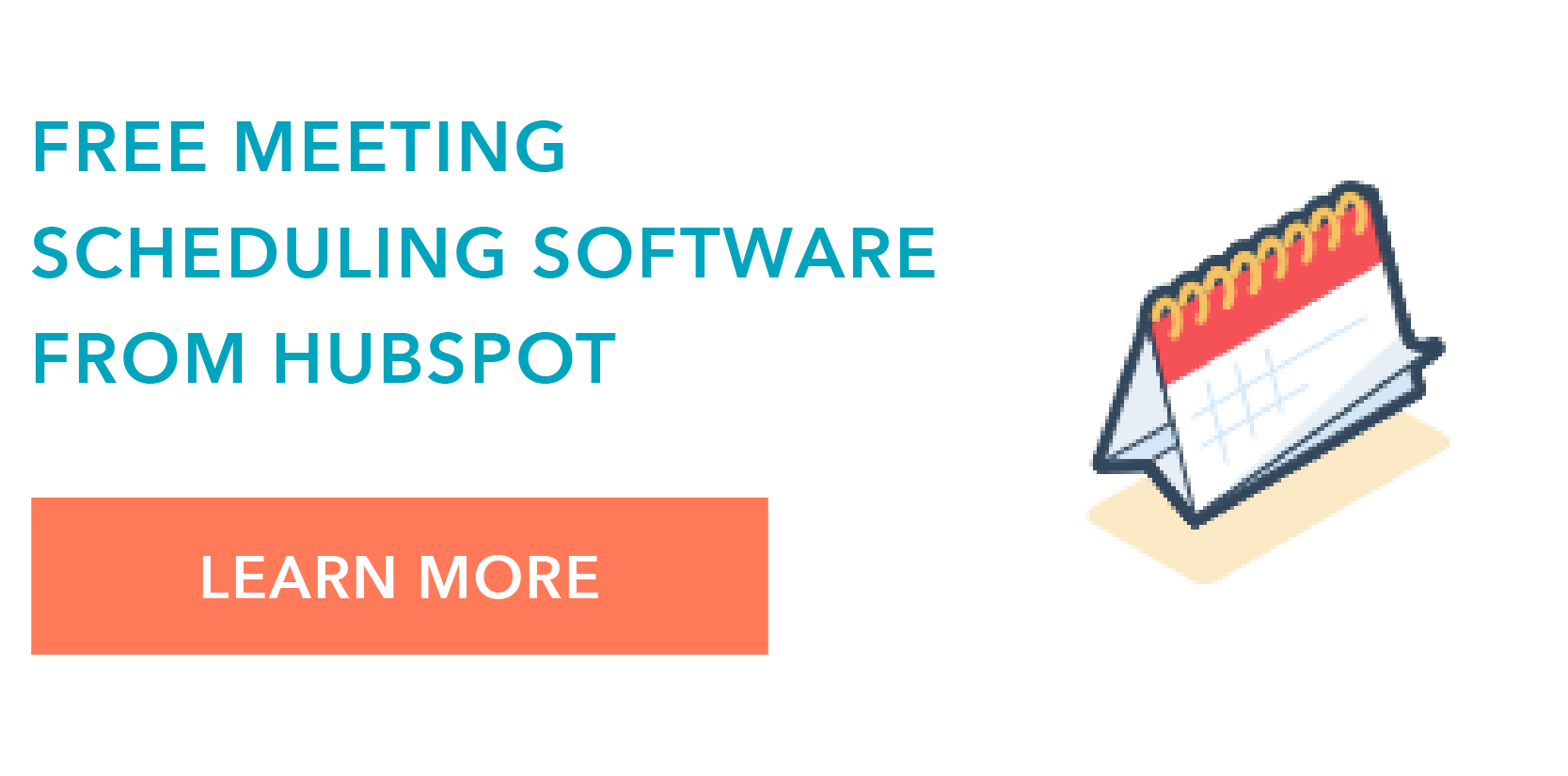
Originally published Mar 16, 2021 1:30:00 PM, updated June 11 2021
Tools Working Conditions Designed For Ease Of Use
Source: https://blog.hubspot.com/sales/find-a-meeting-time
Posted by: clementwrapprand.blogspot.com

0 Response to "Tools Working Conditions Designed For Ease Of Use"
Post a Comment